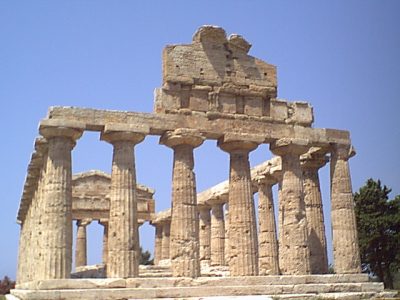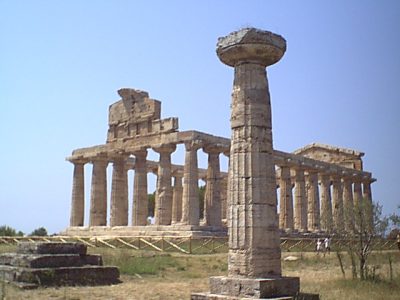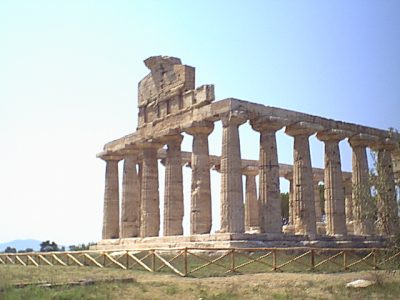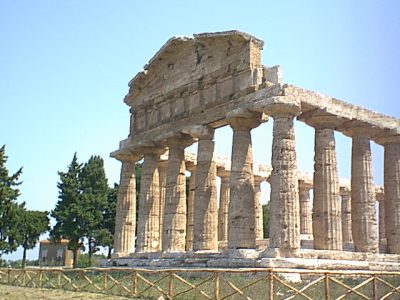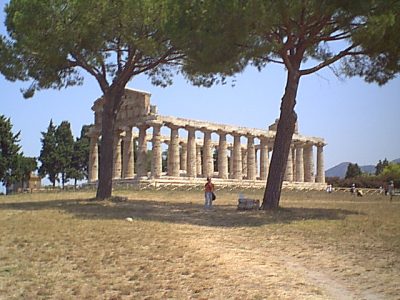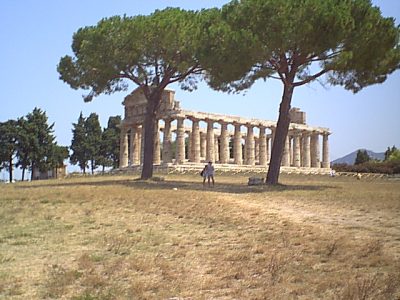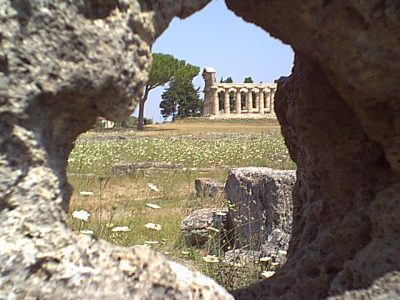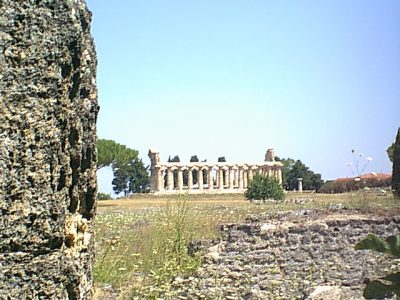The Temple of Athena, often called the Temple of Ceres, is an archaic Doric temple in the ancient city of Paestum. It is the second of the great temples of Poseidonia, constructed c. 500 BCE on the highest point in the city, as temples dedicated to Athena normally was.
The name Temple of Ceres is a misnomer from the 18th century.
The Building
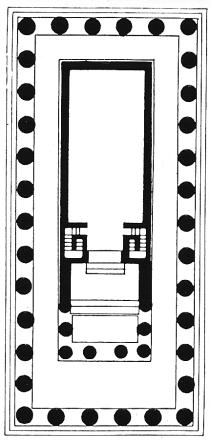
The temple is of the Doric order, measuring c. 33×14.5m, i.e., somewhat smaller than the other two surviving temples. It is oriented E.-W. with the entrance to the E. as was customary.
The temple is peripteral, hexastyle with 6×13 columns in accordance with what will later become the classical Doric order. Most of the outer parts of the temple have survived, including all 34 columns, the architraves and parts of the frieze and of the pediments.
The columns have a noticeable entasis and the echinus has the curvature that is a distinctive trait of the archaic Doric order. In both cases it is less pronounced than in the older Temple of Hera I, thus hinting at a later date of construction.
The remaining parts of the frieze indicates that the temple has not had carved metopes. They have been either undecorated or painted. The travertine blocks forming the frieze are elongated, with alternating metopes and vertical grooves where separately carved sandstone triglyphs have been inserted. On the front pediment a single triglyph is still in place, another can be seen in the museum. The two courses of decorated sandstone above and below the frieze are somewhat unusual.
Much of the pediments has survived and the lower part of the cornice is clearly missing, ruling out any sculpture on the pediment.
The internal parts of the temple are completely detached from the peristyle. The centre of the building is placed asymmetrically within the available space, it is itself asymmetric with a very deep pronaos or porch, the columns used are much smaller than those of the peristyle, they are not aligned with the columns of the peristyle and they are of a different order.
There has been a lot of emphasis on the approach in the design of the temple. The space in front of the pronaos is twice the width of the corresponding space in the back and the porch was extraordinarily deep. It had eight ionic columns, four in the front, two on the sides and two engaged in the antae of the walls of the porch. Of these columns only the bases and two capitals remain. The capitals are in the Archaeological Museum.
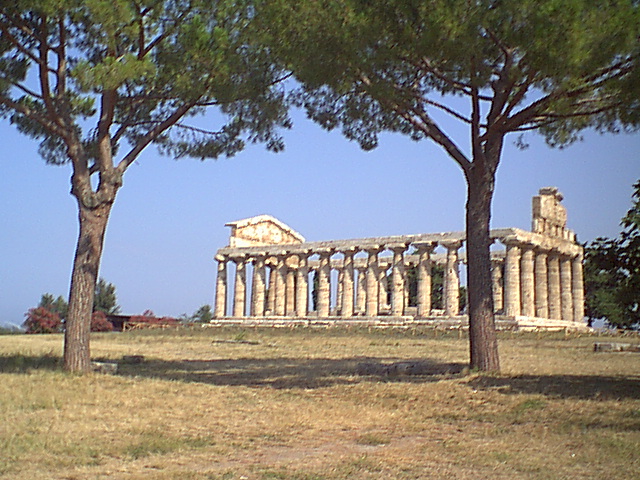
The back of the porch was elevated by a few steps. From the porch a flight of steps led into a short corridor. On either side are the remains of staircases which might have led to the roof. At the end of the corridor is the entrance to the cella or naos. Very little remain of the walls, but the naos has been without any internal columns or separations.
The temple had not adyton and no opisthodomos.
Almost nothing is known about the roof, but it has been supported by wooden beams. The holes are still visible on the inside of the entablature.
The Temple of Athena, though smaller that the older Temple of Hera I, is equally remarkable. Most important, it is the first known temple in the world to mix the Doric order of the main peristyle with the ionic order used in the porch. It would be another fifty years before that combination would be tried again, this time in mainland Greece.
The technical solution to the construction of the frieze is also very novel.
The Cult
The temple was dedicated to Athena, which the Romans called Minerva. This has been confirmed by the votive offerings, mostly small terracotta statues of Athena, that were given to the temple by worshippers and later buried in consecrated pits when the temple became too cluttered. Such stipe dating from the sixth and fifth century BCE have been found near the temple and its altar. Terracotta fragments with the writing MENERVA show that the cult continued into the Roman period.
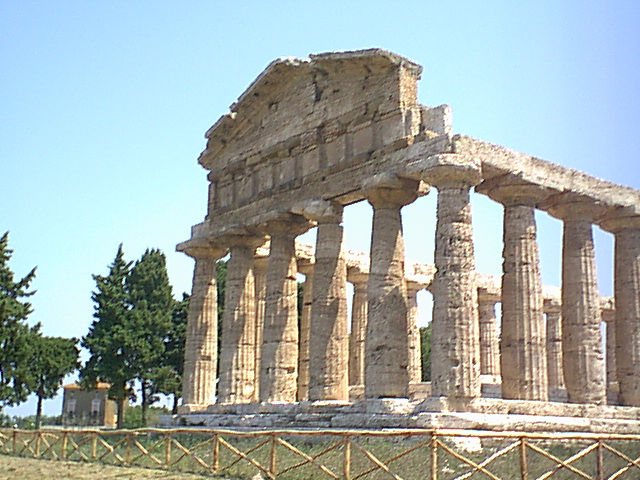
The attribution to Athena is well in line with the position of the temple on the highest point within the city limits. It can’t really be called an acropolis, but it is the closest thing available in Poseidonia.
In front of the temple, to the east, are the remains of the main altar, extending almost the full breadth of the temple. Most of the ceremonies have taken place here.
Close to the altar stands a lone Doric column and the base for another column.
The cult of Athena continued until the end of ancient Paestum. When the decline was inevitable the remaining population settled around the Temple of Athena and when Christianity became dominant, the temple was converted into a Christian church, reversing the orientation of the temple in the process. Three Christian burials have been found under the S. peristyle.
The church was in use until the 8th century when a new church was build nearby, the L’Annunziata.
Photo gallery for "Temple of Athena"
There are 10 photos in this gallery.



